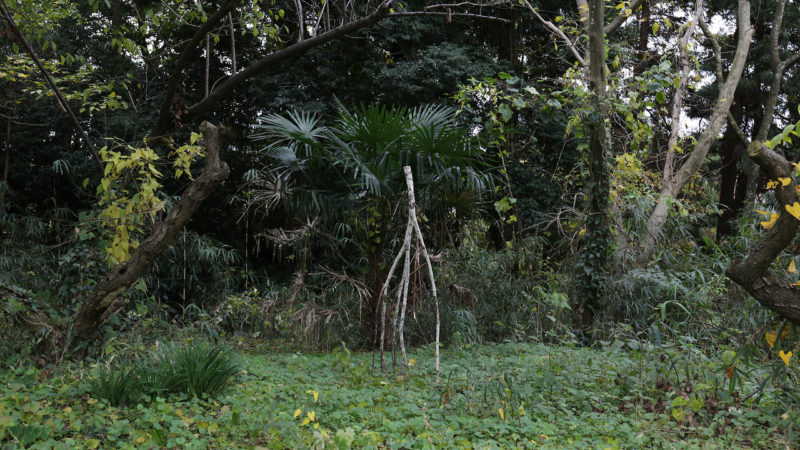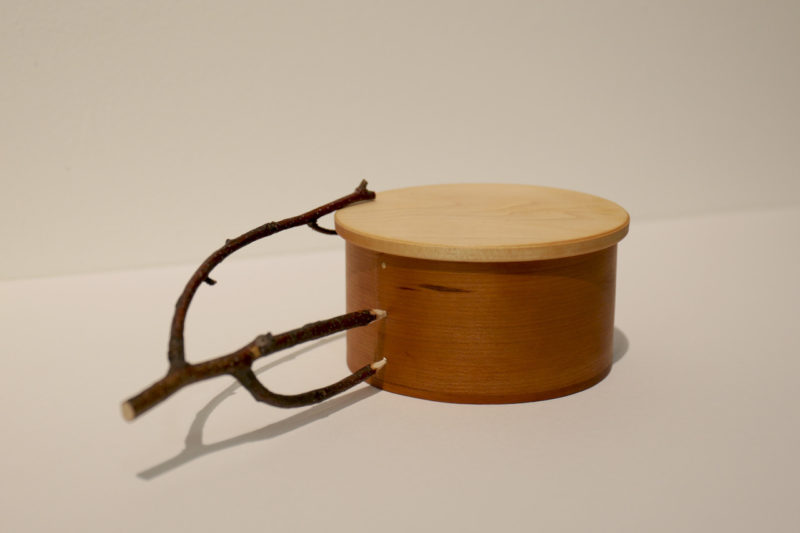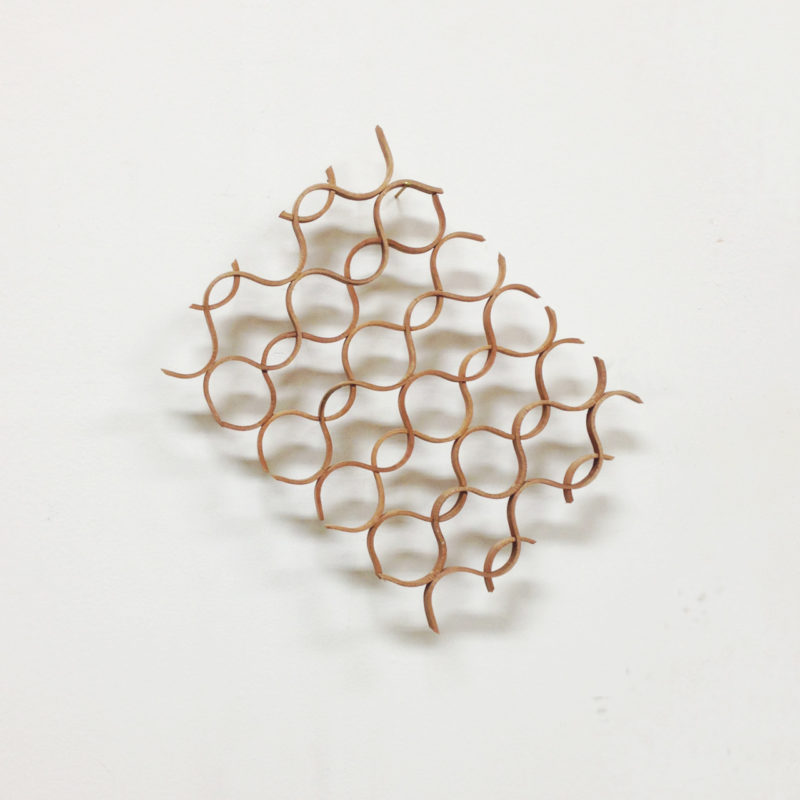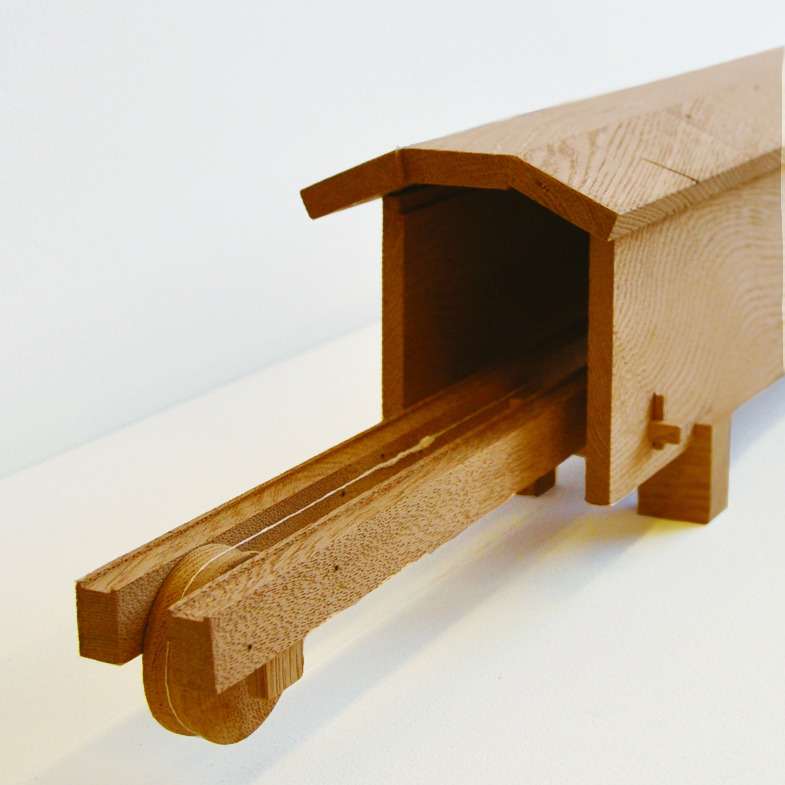14 Nov 2017
Interview
Interview with Hitomi Usui

Bought it online, 2016
Japanese artist Hitomi Usui comes to HIAP through the Finland-Asia Exchange Programme. Her practice focuses on working with wood as a medium. During her time at HIAP, she will explore working with wood found in the forest using only prehistoric tools early humans might have used—water, fire, and a knife she made herself.
Christophe Dupuis: How did you first get interested in art?
Hitomi Usui: I was about twenty years old. Until I was around 15 years old, I thought that the world, human beings and human society, were perfectly complete. I believed that if I was a good person, bad things would not happen to me. But I began to realize this was a mistake. Earthquakes and natural disasters can strike, even if you are a good person. And I began to understand that human beings can only with the natural flow of the earth. We are not able to be perfect. We are just one species living on earth. Of course, this gave me terrible anxiety. This anxiety is one of the reasons why I chose a life as an artist. Art allows me to free myself from spending every day dealing with this anxiety.

Nest 001, 2016
CD: How did you first become interested in working with wood?
HU: As part of my anxiety, sometimes I was not able to touch things that I thought were dirty. When wood is carved, when a layer is removed, a new grain will appear below that no one has ever touched. It’s like a person’s skin, more beautiful even. The surface of the wood which no one has touched has a clean, virtuous, pure existence that above all reassures me.

Untitled, 2016
CD: Why is wood interesting for you as a medium?
HU: It is likely that some the first tools used by humans were made of wood. I imagine that there once was a Wood Age in prehistoric times. But wood decomposes and returns to the soil, leaving no material evidence to prove the existence of a Wood Age. It is neither added to human history, nor introduced into our history books. However, the lack of evidence leaves room for boundless imagination, and that is what I explore in my practice. On the other hand, Japan has a very long wood culture. The knowledge of the wood, techniques, and tools that our ancestors have built has been improved and inherited for a long time.

Untitled, 2010
CD: What is the project that you will work on at HIAP?
HU: The title of my project at HIAP is Walking in the Forest, Uncovering the Wood Age. I will take daily trips into the forest carrying nothing, existing as a single body in the forest. My activities will take place in forests easily accessible from towns and on my trips to and from nearby islands. I have studied woodworking techniques that require planes and chisels, but I will leave such tools behind in Japan and take just a small knife that I made. I will only use water, fire and the knife to experiment with materials found in the forest. If I choose to make something with the material, I will attempt to use it, and pursue a practice that expands the imaginative ideas of the Wood Age, but without trying to recreate it. I will also conduct research and engage in dialogue with fellow artists and local residents to investigate the relationship between humans and forests and conduct research on myths related to the forest.

For gathering, 2016
CD: Why did you want to explore these themes?
HU: I want to conduct research on the relationship between humans and forests. Despite always working with wood, I have felt the lack of any relationship with the point of origin of my material, the forest or tree. I want to consider of succession and inheritance about the cultural and spiritual aspects such as the worship of nature and the use of trees.

Plants in the north, 2015
CD: Why did you want to come to HIAP for this project?
HU: I would like to focus on similarities and differences between Japan and Finland; worship of the forest, the presence of Indigenous peoples in northern regions, the use of tree bark and the technique of bending wood. During my stay, I will focus on the Everyman’s Right, a right that does not exist in Japan, and the people’s attitudes towards the forest. I hope to broaden my perspective, and learn the expansiveness and diversity of the world which cannot be taught.
